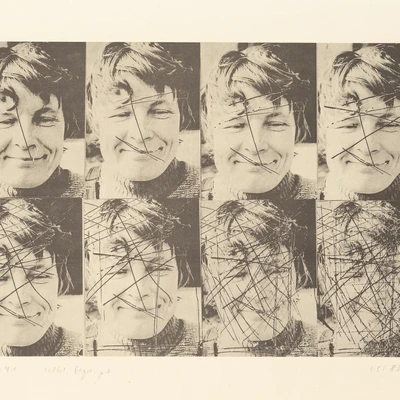Paul Kuhfuss
- * 1883
- † 1960
Life dates
- Artist
Category
Art Pedagogy
Artist and educator Paul Kuhfuss (1889 – 1960) was a lifelong Berliner. Under Philipp Franck, Kuhfuss first received training to become a drawing instructor at the Königliche Kunsthochschule (1902-05) and then studied landscape painting at the Hochschule für bildende Künste Berlin-Charlottenburg (1905-07). From thereon, he worked as an art teacher for over half a millennium.
While early on Kuhfuss emulated impressionist forbears, such as Lovis Corinth, he developed his own style in the 1920s by fusing together his expressionistic relationship to nature and his naïve artistic approach. Due to color choice and paint handling, his figures look like characters from children’s fairytales – the scenes appear fantastical and alive. Like many other expressionists, who sought the total integration of art and life, Kuhfuss meticulously curated the interior of his apartment.
The Nazis defamed Kuhfuss and forbade him from exhibiting work in 1935. After the war, his reputation was only temporarily rehabilitated. Paintings by him were included at the first two Deutsche Kunstausstellungen in Dresden (1946 and 1949), but rejected by the jury for its third installment (1953). A year later, he was forced to step down from a leading post at a textile and fashion school in Berlin (1949-54), though he kept teaching at the Pankower Volkshochschule. Nevertheless, the artist was celebrated posthumously by two retrospectives on the occasion of his 90th (Reinickendorf City Hall) and 100th (National Gallery) birthdays.
Kuhfuss’s biography confirms that careers in art and art pedagogy don’t face the same hurdles. His status as a public servant afforded financial security, enabling him to pursue his passions in still life and landscape without interruption and to slip beneath the threshold of SED censorship without receding from the public sphere of East German art altogether.
text: Tobias Rosen
Works by Paul Kuhfuss
Travelling exhibition
Publik machen: 40 Künstler:innen aus dem Bestand des Zentrums für Kunstausstellungen der DDR
Popular keywords
Many more works are hidden behind these terms
